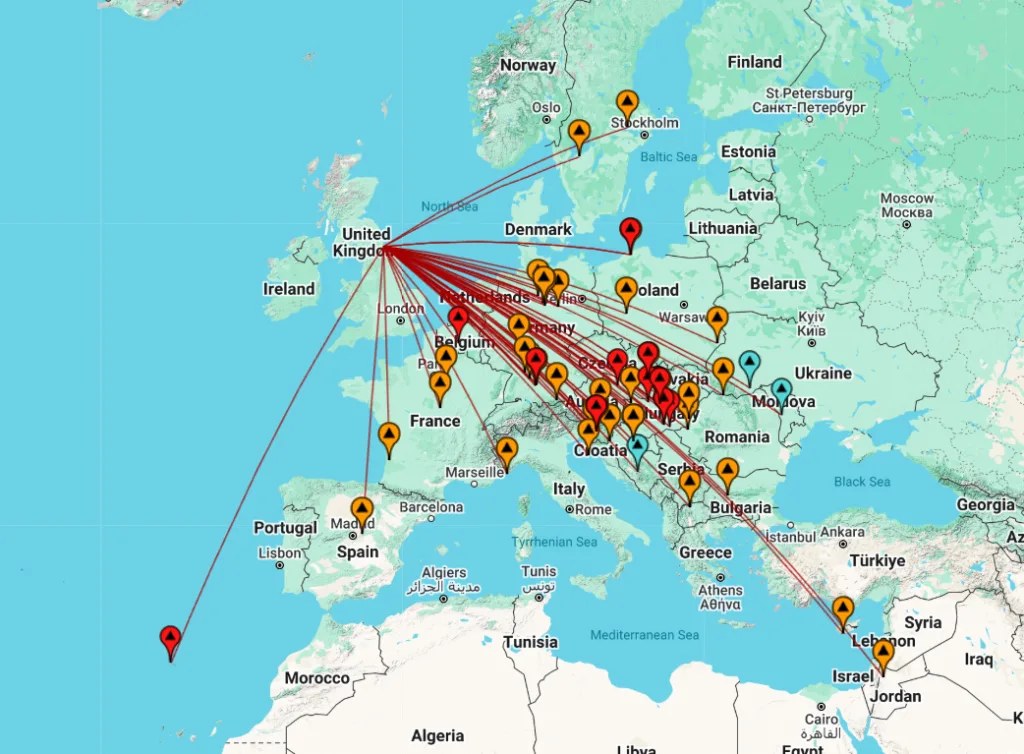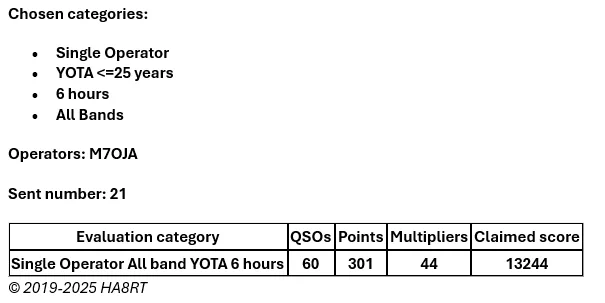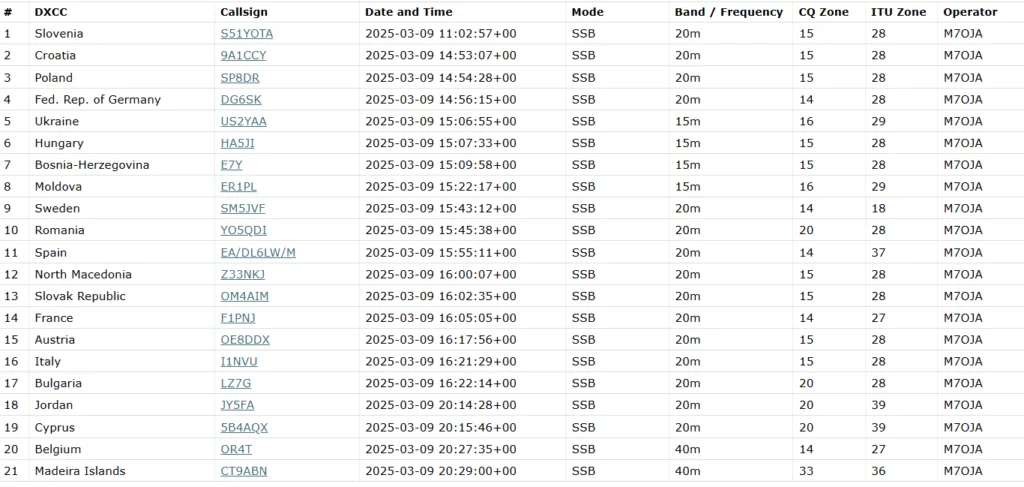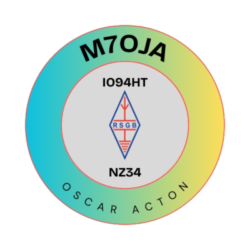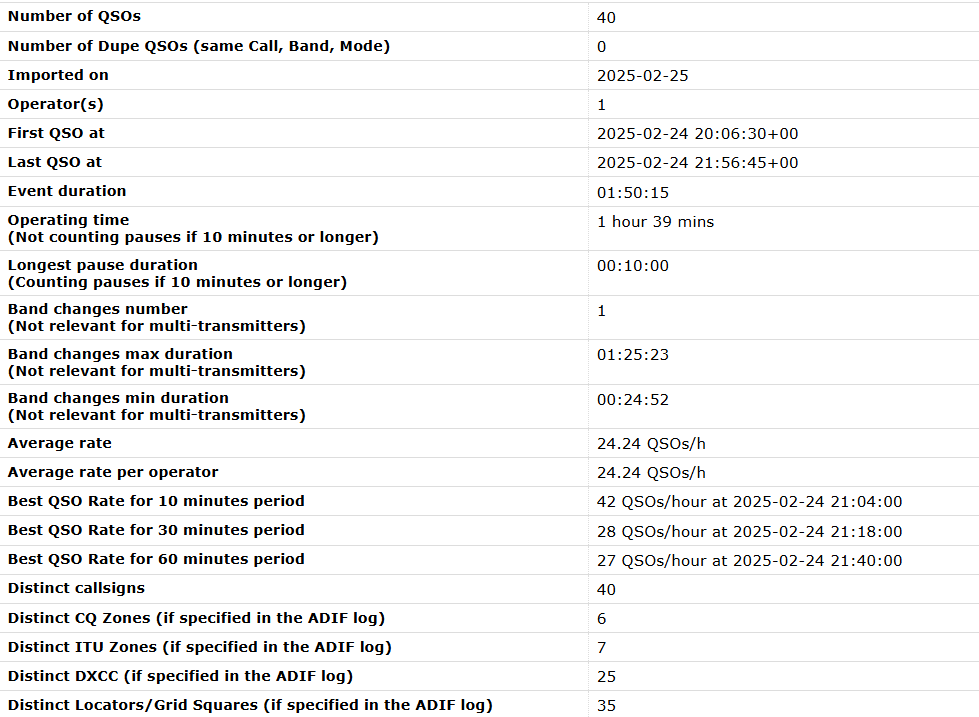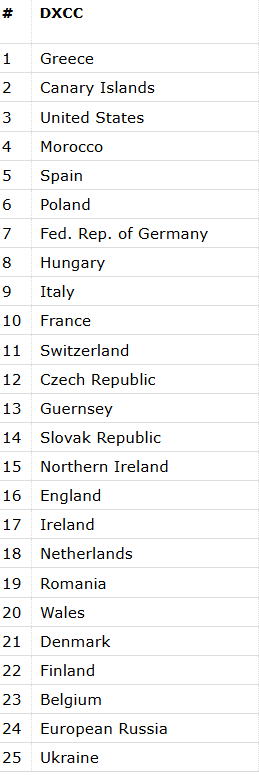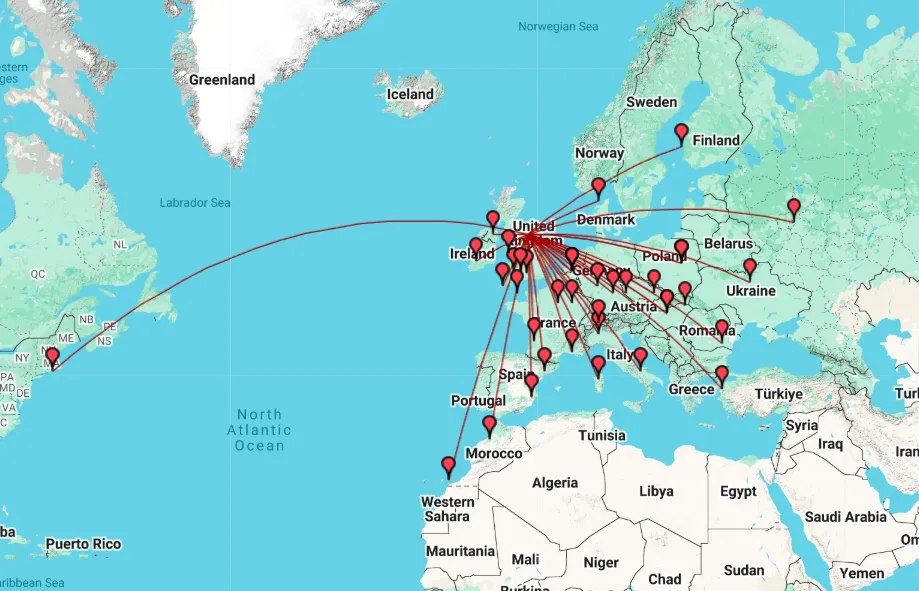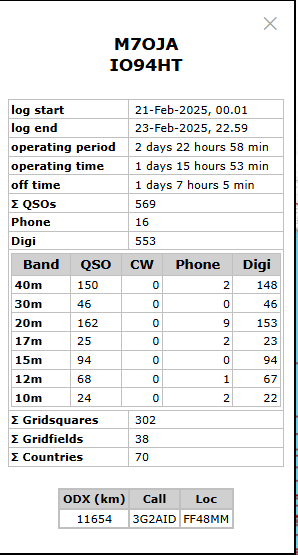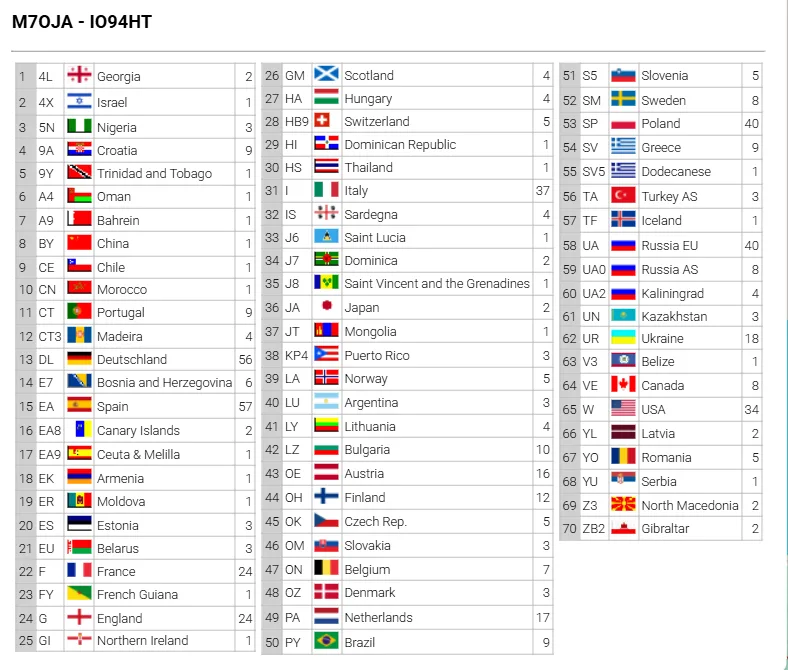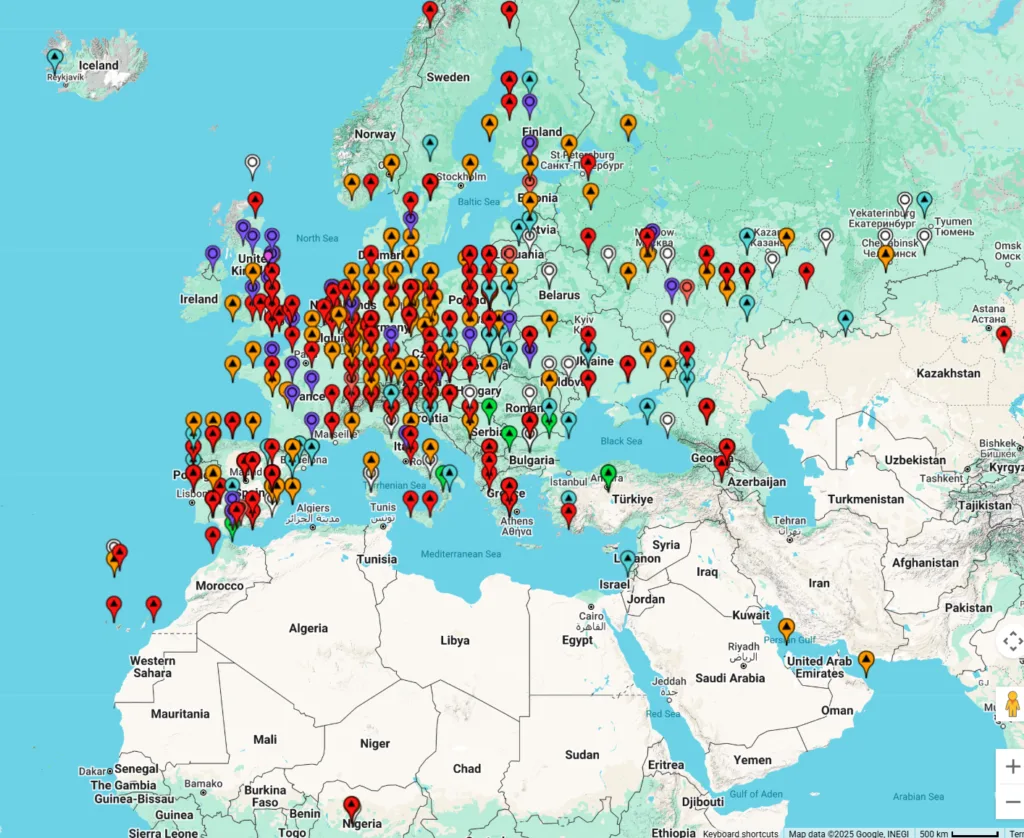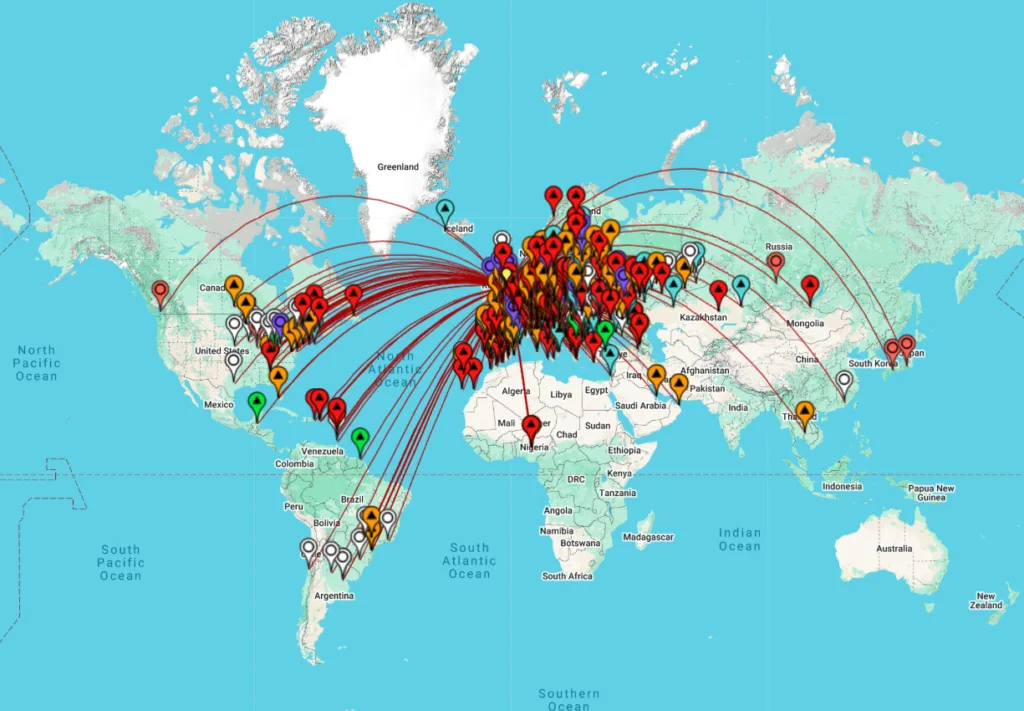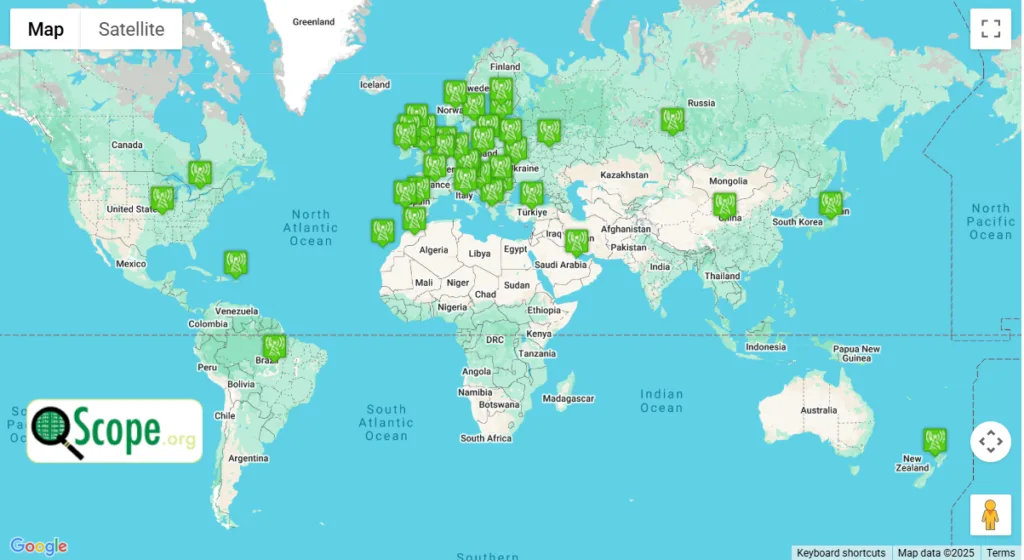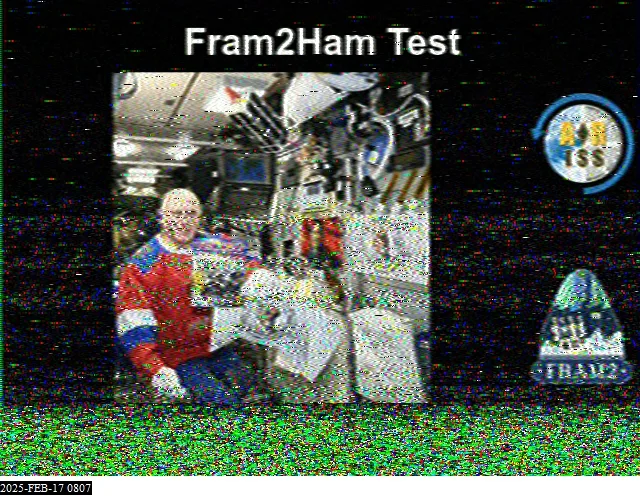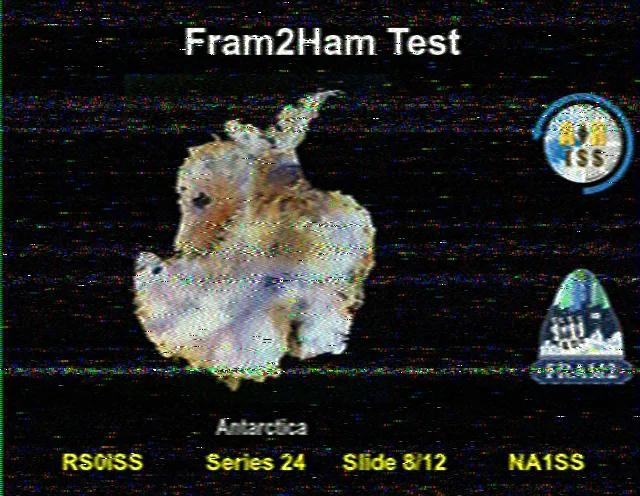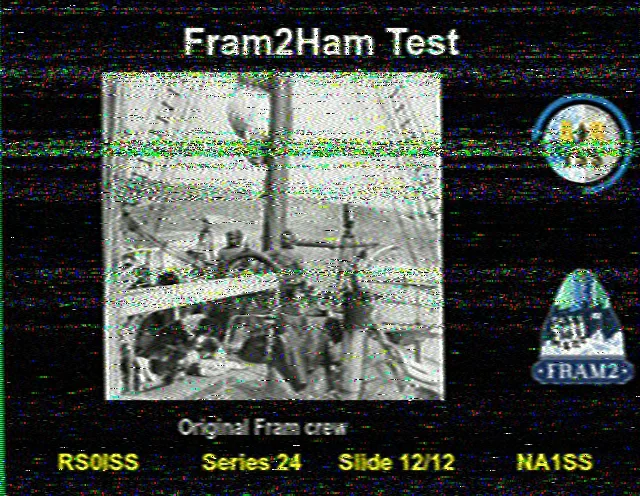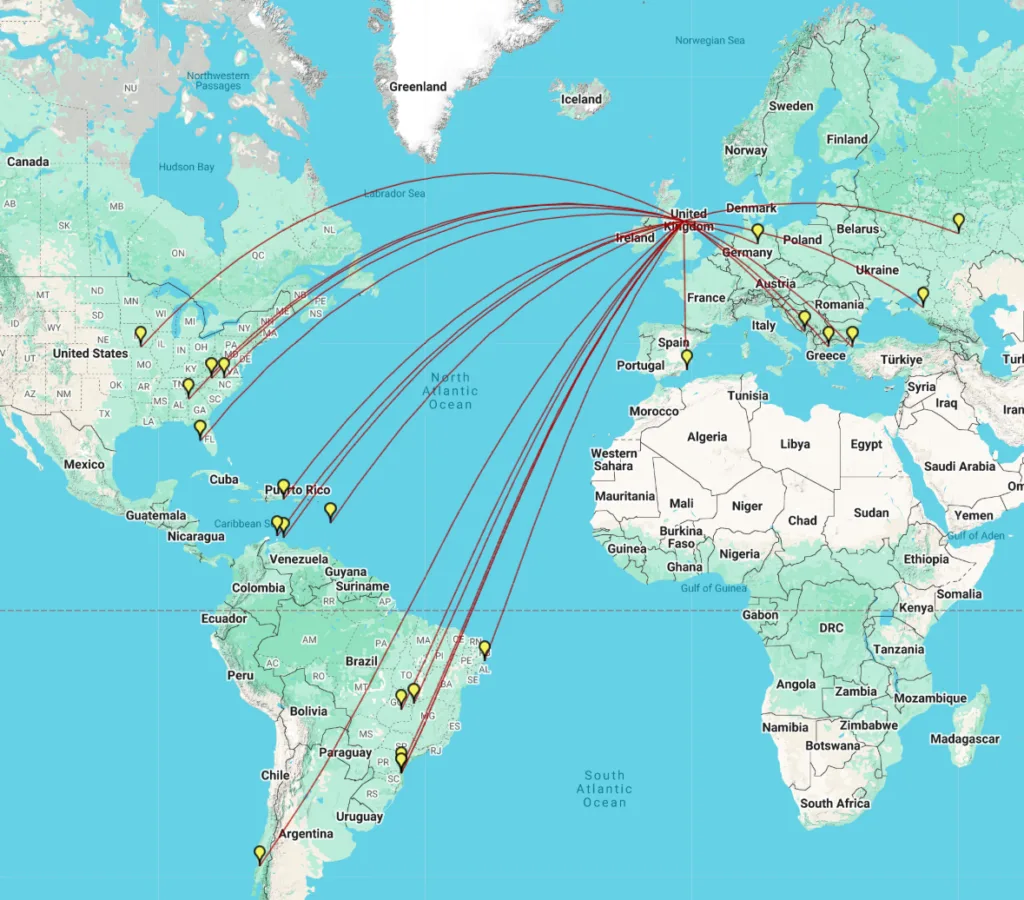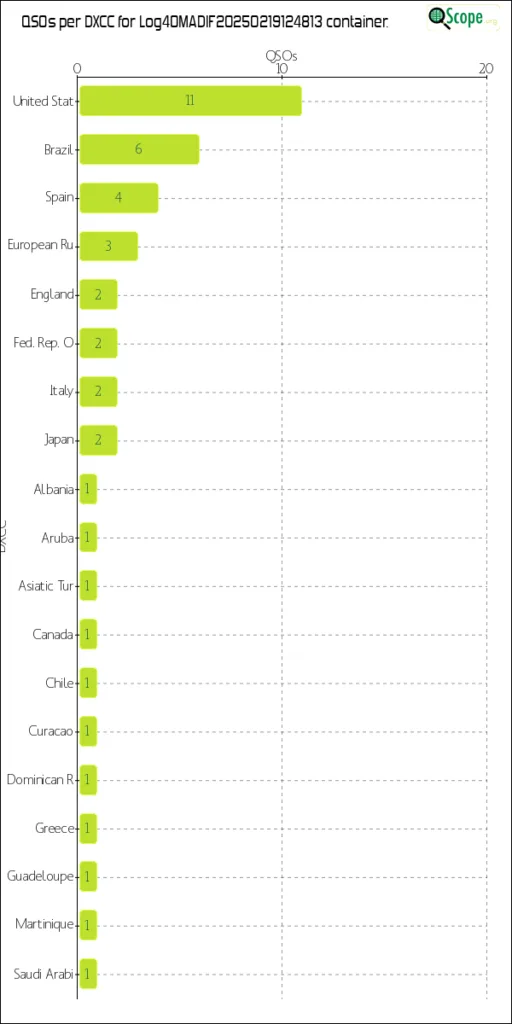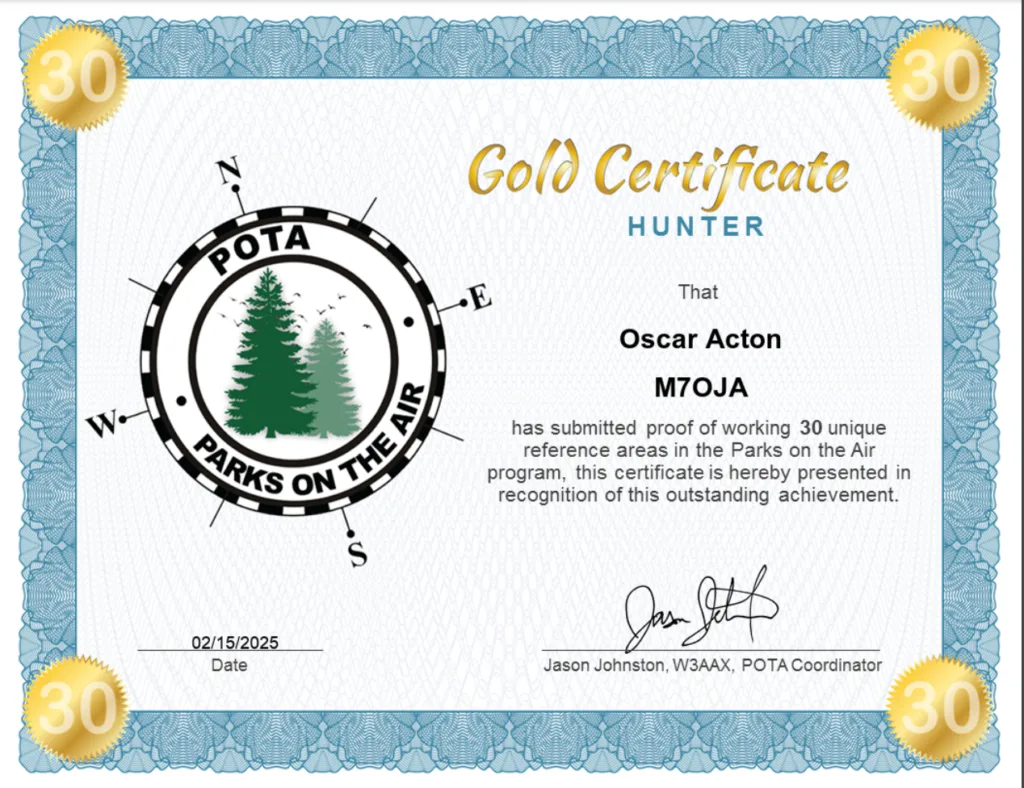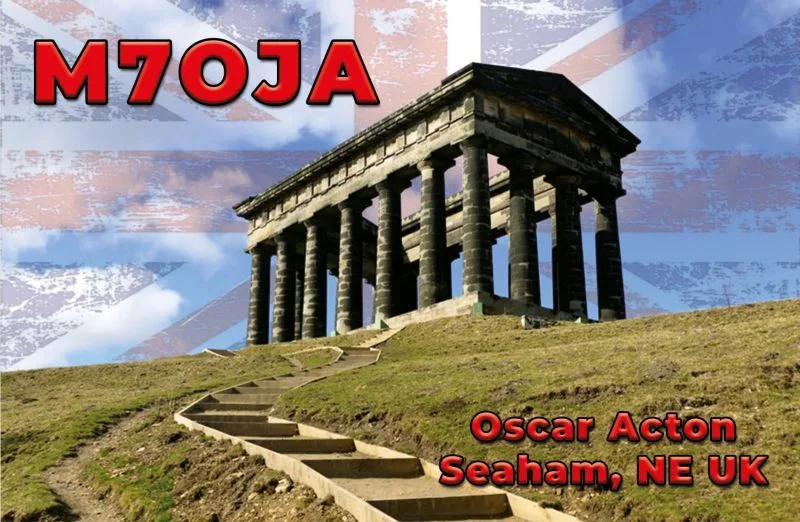This week especially, working conditions on HF have been a lot better than usual. Even with a very modest antenna and low power, DX contacts have been achievable. This has also been helped by a range of DXpeditions at the moment, increased portable activity through schemes such as Flora Fauna (WWFF), Parks on the Air (POTA) and Summits on the Air (SOTA). There have also been several special event stations running recently.
The most important factor, however, is the fast approaching peak of Solar Cycle 25, giving us improved propagation and many DX opportunities.
You can see my daily snapshot HERE to see for yourself!
DXpeditions
At the moment, there are two major DXpeditions running. The first is V73WW, Marshall Islands. The second is VK9XU, Christmas Island. The links to both of their websites are below:
V73WW
VK9XU
Special Event Stations
There are a number of special event awards, provided by the Hamaward system. With this system, QSOs are automatically uploaded by the DX station (you do not need to submit your logs or QSL cards). Over the course of the award, you can work each participating callsign once per band, mode and day. This means you can accumulate a number of points per day. At the end of the award, your points are added up, and there is a feature to download digital QSL cards as well as a diploma if you have successfully scored enough points. Participating stations will provide an embedded log search in their QRZ page, and you can check how many points you have accumulated. The awards currently running are as follows:
PZK-IARU
This award is celebrating the 95th birthday of the PZK organisation and the 100th of the International Amateur Radio Union (IARU). The 1st round of the contest runs from the 17th Feb 2025 – 3rd Mar 2025.
Please see the link HERE for more info.
VOLTA
The VOLTA contest is running from Feb 15th 2025 – Feb 23rd 2025. The award is to mark the 27th Volta International Memorial Day.
Please see the link HEREfor more info.
Marconi (IR0RRAI)
The IR0RRAI award is to celebrate the 150th birthday of Marconi. The contest runs from Feb 15th 2025 to Mar 16th 2025.
Please see the link HERE for more info.
Terni, City of Love (II0LOVE)
The Terni, City of Love award is running from Feb 01st 2025 – Feb 28th 2025 to celebrate St. Valentine’s Day.
Please see the link HERE for more info.
Enjoyed the article? Share it here!
